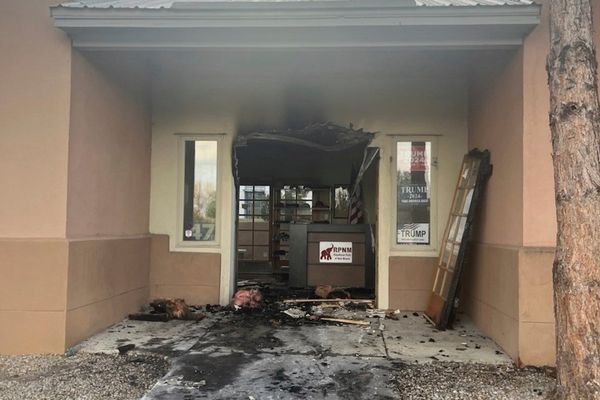
Philip Harris, a 42-year-old designer who has properties in south and east London, became a landlord by accident after meeting his now wife. She already had a flat, but rented it out, and the couple bought a property off-plan, when it was still at the design stage. When their children were born, they needed more space and bought a third property, renting out the second one. At the time, they saw their small portfolio as a retirement investment, but now, worried about mounting costs, they want to reduce the risk by selling one of the homes.
It’s a picture playing out across the country. Landlords sold 35,000 more properties than they bought across 2022, according to Hamptons analysis of data from Countrywide, as the jump in mortgage costs and tax changes make buy to let an increasingly unappealing proposition.
Eight years after the then-chancellor George Osborne clamped down on what many saw as the excessive tax privileges enjoyed by buy-to-let investors, some landlords are claiming the government has embarked on a fresh mission to “destroy” the sector.
And those in the industry who claim landlords have been subjected to a long “war of attrition” have found an ally of sorts in an influential committee of MPs, which is calling for changes to be made to make buy to let “more financially attractive” to smaller landlords.
The first blow came in 2015, when Osborne introduced reductions in tax relief on buy-to-let mortgages. A three-percentage-point stamp duty surcharge on buying additional properties followed.
The regulatory burden has increased and this year, Michael Gove, the secretary of state for levelling up, housing and communities, plans to strengthen tenants’ rights with greater regulation, including scrapping section 21 “no-fault” evictions.

Hadi Khalisadar is a not-so-small landlord, with 150 properties and his own lettings agency. He said 20% of the landlords he worked with wanted to sell. “Lots of landlords are very anxious, to the extent that some are saying they cannot afford their properties.” Khalisadar wants to get rid of three of his homes, too. He says lettings are now “over-regulated”, and rising interest rates have not helped.
Since last year, the Bank of England has hiked its base rate 10 times, driving mortgage costs higher. Data from Moneyfacts shows the average cost of a new two-year buy-to-let fixed rate mortgage stood at 5.95% at the start of this month. That is up sharply on the 2.9% average at the start of December 2021, though it has come down a little from the 6.75% peak reached in early November last year after the crisis in the bond markets triggered by the Kwasi Kwarteng-Liz Truss mini-budget.
In December, the Bank forecast that by the end of this year, monthly mortgage repayments for buy-to-let landlords would typically rise by about £175. It warned that a fifth of landlords with a mortgage would face increases of more than £300.
Not everyone minds. Critics say landlords benefited from years of strong property price growth while squeezing as much rent as possible out of young adults locked out of the housing market. But many smaller buy-to-let investors claim they are now staring into the financial abyss. The jump in mortgage rates has left some facing losses, while warnings in some quarters of a house price crash have provided yet another reason to consider bailing out.
In a report last week, MPs on the levelling up, housing and communities select committee argued in a report that the government needed to consider making buy to let more financially appealing to landlords with smaller portfolios.
The group of cross-party MPs, which is chaired by Labour’s Clive Betts, concluded that the most “serious challenge” was “the high cost of renting”. Their report said: “We share some of the concerns expressed about the reduction in the size of the private rental sector, and we recommend that the government review the impact of recent tax changes in the buy to let market with a view to making changes that make it more financially attractive to smaller landlords.”
Ben Beadle, the chief executive of the National Residential Landlords Association, said the government’s proposals were “spooking the bejesus” out of his members. If implemented they would force even more landlords to quit, further reduce the size of the private rental sector, and prompt higher rents for tenants.

Amy Cowan at Capital Letters, a non-profit organisation that helps people on benefits find housing, said the lack of supply meant families were struggling to get properties, with rents rising: “We now have 10 families fighting for one property … Rents are really high.”
Dorian Hardacre, 48, who has been in the lettings market for 23 years and owns dozens of student properties, primarily in Bristol, claimed the government’s proposals showed a “lamentable lack of understanding” and would have a “devastating impact on the availability and cost of private accommodation”.
Others feel that smaller landlords would bear the brunt of changes. The report from MPs said: “We were told smaller landlords would be much more likely to leave the sector than larger ones as they would be less able to afford the increased cost and risk of letting, and that policy since 2015 had been designed specifically to do this, as the government wanted to see the sector consolidated in the hands of fewer but larger landlords, or at least to cool the buy-to-let market.”
But some are more optimistic. Data from Moneyfacts shows the number of buy-to-let mortgage products on offer has risen from 988 in October 2022 to 2,246 this month.
Figures from estate agent Hamptons show a slight increase in rental homes coming on to the market, but supply is still low compared with historic figures. This year there were 19% more homes available to rent in Great Britain than in January 2022, although this was down 57% compared with 2019.
Aneisha Beveridge, head of research at Hamptons, said: “Some landlords have sold up, but the majority are trying to take a longer-term view.”
“Most landlords with mortgages are reading up on them and know rates will come down. They will be nowhere near as low as they used to be, but down a bit.We will see more landlords sell than buy this year, and possibly next year, too, so there are definitely risks, but I would not say it is the end of buy-to let.”
She says there are risks for renters. Higher mortgage rates will delay the purchase of first homes, forcing people to rent for longer, further driving demand in an already overheated market. Hamptons thinks rents will continue rising this year as a result.
“It’s a hard mechanics to figure out,” says Beveridge. “If landlords were to sell, then I think about a third of sales will be bought by other landlords, and some will get bought by first-time buyers.”
For those in the sector, particularly smaller landlords, it’s a case of waiting to see if they can weather the storm.
“It causes me huge amounts of stress and anxiety,” says Harris. “We have a big mortgage and, on top of that, an outlay every month to cover the expenses. We are just trying to breathe through it, as we are hoping there will be some respite.”







